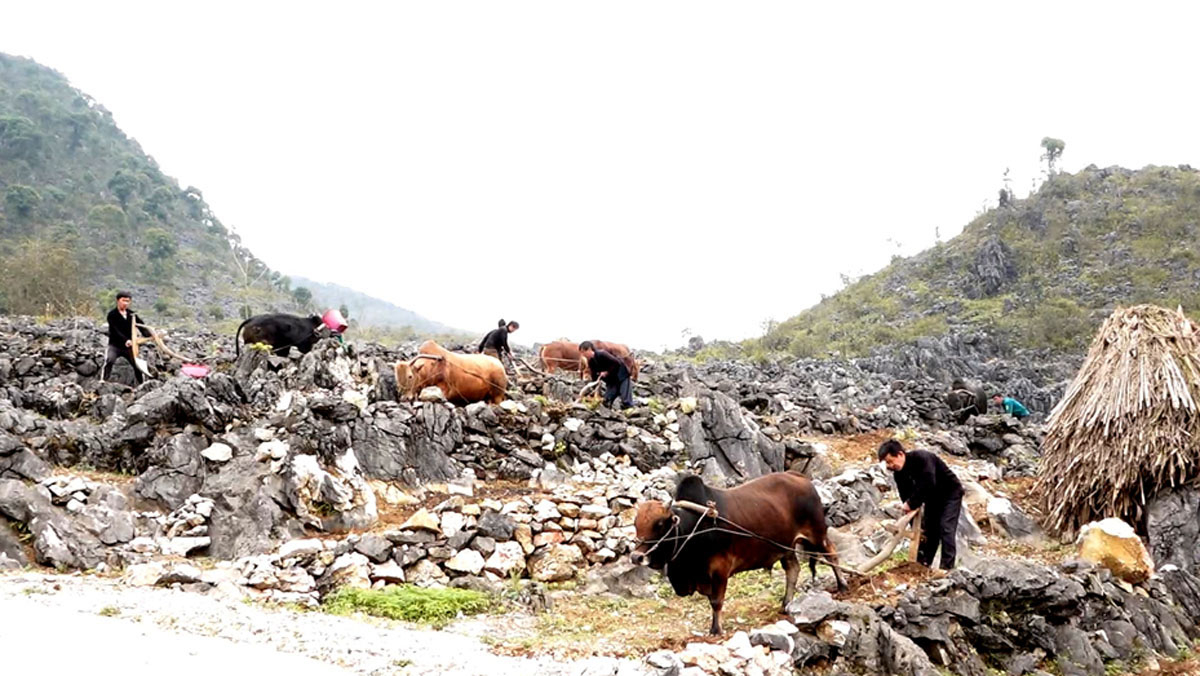Farming season on the Karst Plateau
BHG - With over 80% of its area covered by rocky mountains, the Dong Van Karst Plateau is one of the most challenging regions for cultivation. However, as spring arrives, the local ethnic communities eagerly prepare for the new farming season.
In Sung Thai Commune (Yen Minh District), Sung Chan Min and his family, along with neighbours, hurriedly head to the fields to begin planting. Last year, heavy rains caused landslides that damaged many plots, so this year, Min carefully rebuilt sturdy stone fences. On the highland fields, men use hoes and shovels to till the land, while women carry their children on their backs as they sow seeds, creating a bustling scene of labour. With newly supplied hybrid corn seeds and well-prepared soil, Min hopes for a bountiful harvest this season.
 |
| Hmong ethnic minority people in Sung Tra Commune (Meo Vac District) prepare for the new farming season. |
Given the harsh limestone terrain, the people of the Karst Plateau have developed a unique “rock cavity farming technique”—a method that involves stacking stones to hold soil in small rock crevices for cultivation. This practice requires great skill, fostering a strong sense of community. It is reflected in the “mutual labour exchange” tradition, where families take turns helping each other arrange stones, plough the fields, and plant crops. Thao Thi Cho, a resident of Thang Mo Commune, shared: “Thanks to the support of our neighbours, farming becomes much easier, creating a joyful atmosphere and strengthening the bonds within the village.”
According to the Department of Agriculture and Environment of Yen Minh District, favourable early-year weather, with abundant rainfall and high humidity, has provided ideal conditions for farming. Local authorities have promptly supplied seedlings, fertilisers, and agricultural materials, particularly to households benefiting from the three National Target Programmes. As a result, the district’s total food production in 2024 reached 45,600 tonnes, achieving 99.88% of the target, an increase of 63 tonnes compared to last year. The average yield per hectare has risen to nearly 47 million VND.
To improve productivity, Yen Minh District is promoting crop restructuring. Giang Loc Thang, Head of the District Agriculture and Environment Office, stated that 124 hectares of depleted cornfields have been converted to higher-value crops such as chilli, peanuts, soybeans, and high-yield cassava. The government provides seedlings and technical guidance to help farmers adapt to these new cultivation models.
As spring unfolds, the once grey, rocky slopes gradually turn green with corn and rice fields. This transformation symbolises the hope for a prosperous harvest and the resilience and perseverance of the highland people in their ongoing struggle to conquer the harsh natural environment.
HOANG HA





READER COMMENTS